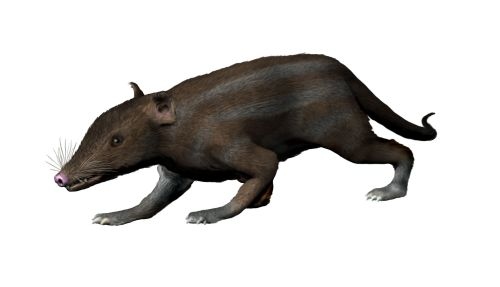 |
| The Lord’s Prayer can be traced back to the historical Jesus, sort of. |
One single word in the gospel of Matthew symbolizes the work that early Christians had to do to turn Jesus’ Jewish sect into an independent religion. The historical Jesus taught Jews to pray to God as “Father.” This instruction was recorded in an early written collection of Jesus’ sayings, the so-called Q document, and it turns up in Luke’s gospel. In Matthew, however, the anonymous evangelist has improved the wording. Matthew has Jesus teach people to pray to “Our Father.” Jesus was a mystic, independent of any religious structure, but Matthew needed him to be the founder of a church, so he inserted the word “our.”
The Jews had a formal, communal religious practice, headed up ultimately by the leaders of the Jerusalem Temple, but that wasn’t Jesus’ way. Like John the Baptist before him, he led a ministry that implicitly challenged the spiritual authority of the Temple and the Jews’ religious leaders. True to mystic practice everywhere, Jesus taught people to pray privately. About a generation after Jesus’ calamitous death on a cross, his followers wrote down the sayings they remembered, often arranging them in groups by theme. The Lord’s Prayer, which starts “Our Father,” is one such collection. Historians consider it plausible that the prayer was assembled by early Christians rather than being a formula that Jesus literally told people to use. Referring to God as “Father” was typical of Jesus, and he probably really did teach people to pray to God as a father in the sky (“heaven”). Luke includes the Lords’ Prayer from Q, and in Luke the prayer starts, “Father…”
That’s all well and good for an individual, but it doesn’t do for a church. The author of Matthew was particularly concerned about the church, and he’s the only evangelist to refer to the church (or “assembly”) in his gospel. Unlike Jesus, this evangelist didn’t want people praying in their closets. He needed a prayer for a Christian congregation to pray publicly and in unison. For that purpose, the prayer in Q needed to start with “our.” With that addition, it could be a congregation’s prayer, with a group of people saying it together. All across the Christian world down through the centuries, Matthew’s version of the prayer has been the one recited in church, just as the evangelist intended. The prayer is known as the “Our Father” (or “Pater Noster”).
We humans evolved religion to bind ourselves together in community. Mystics, such as Jesus, promote a more personal and internal spiritual experience, and in every religious tradition they face resistance from priests, who prefer uniformity and conformity. Jesus was charismatic enough to found a sect that continued among pious Jews after his execution, but it was a counter-culture movement within Judaism, not a new religion. In order to be suitable for an independent church, Jesus’ tradition needed some revising, and the author of Matthew was evidently up to the task.
- - -
Jesus’ reference to God as "father" or "dad" (abba) may have a special meaning if indeed he was a bastard.

